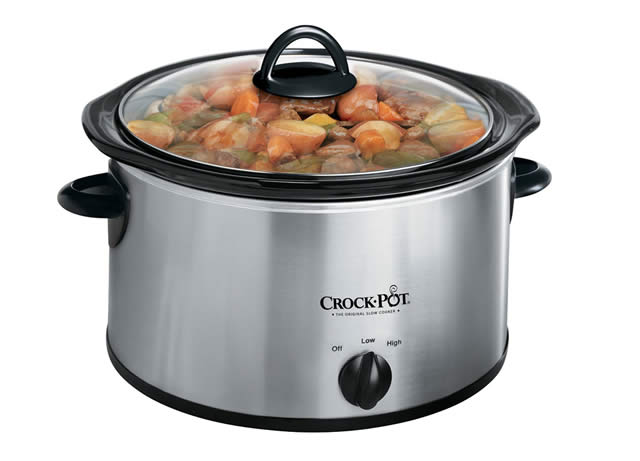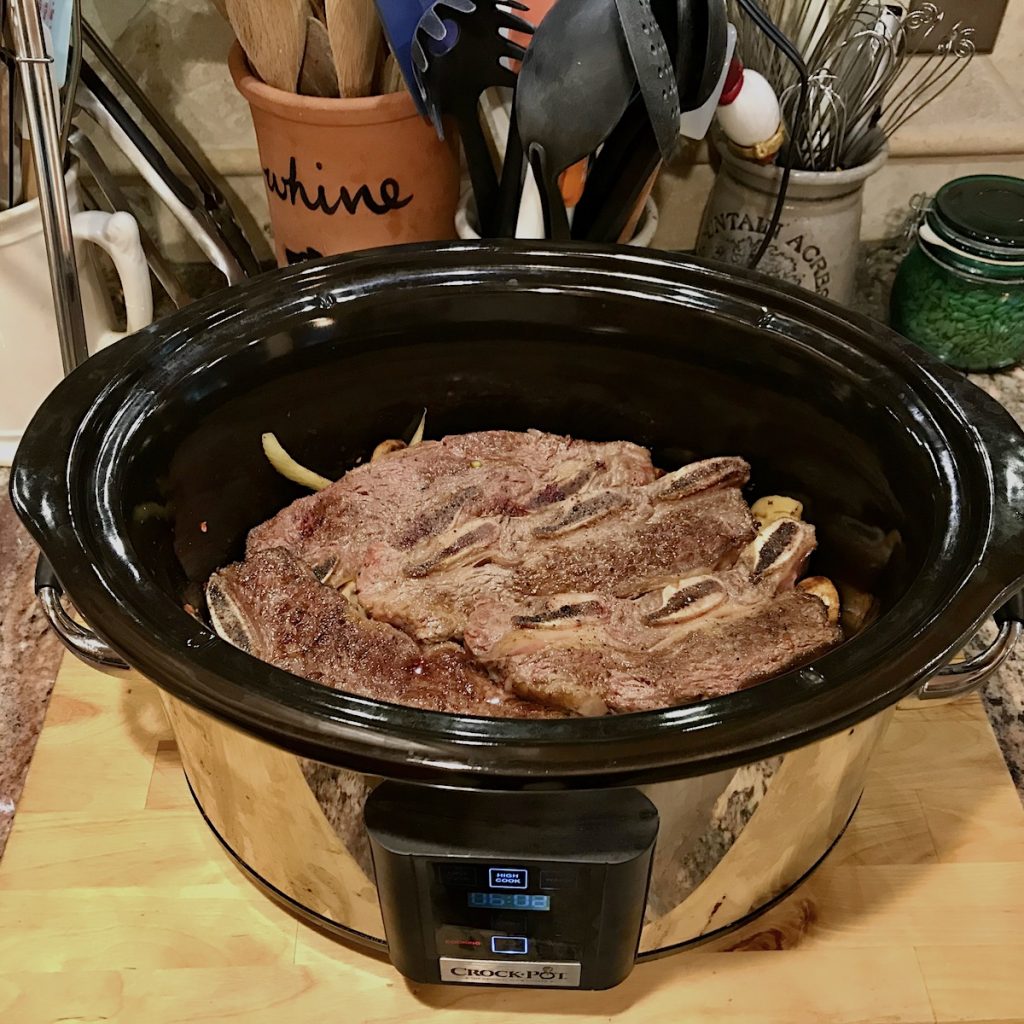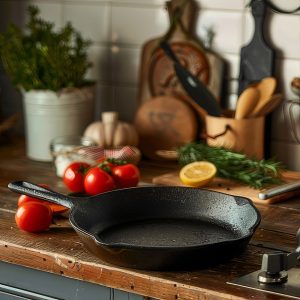You Say Crock Pot, I Say Slow Cooker
Slow Cookers
You might know slow cookers by a trade name: Crock Pot. Crock Pot is a name like Thermos, Jello, or Keenex, where a brand name has become synonymous with the product. But a Thermos is a “vacuum bottle,” and Kleenex is “facial tissues.” And a Crock Pot is a slow cooker.
Some foodie people tend to look down their noses at slow cookers. They had their heyday in the 1970s, and now crock pots are just a footnote to food history.
Well, I must not be a foodie, then. I am a home cook who is always learning and looking for ways to provide nutritious and flavorful home-cooked meals with little effort on my part. Enter the crock pot. The same foodies who sneer at crock pots are the ones who salivate over enameled cast iron Dutch ovens costing many hundreds of dollars, but guess what?
A crock pot can deliver the same results as a costly piece of kitchenware while keeping you from a) spending hundreds of dollars and b) having to turn on your oven.
What is a Crock Pot?
A crock pot is a heavy-sided lidded cooking vessel, usually made of crockery. However, some are now made of cast iron that fits into a metal housing containing a heating element. This element heats the slow cooker to a specific moderate temperature.
The beauty of the crock pot is in the relatively low temperature you can maintain over several hours. Add ingredients, put on the lid, turn on the slow cooker, and walk away. Hours later, your dinner is ready.
What Is a Crock Pot Good For?
Crock pots are made for braising and stewing. Braising is a moist cooking technique that can cook a relatively tough piece of meat in a relatively small amount of liquid.
Stewing is the same, but the liquid usually covers the meat. Because of the low temperature (usually a simmer, or about 185-200F), the connective tissues that make the meat tough melt and break down into gelatin. And gelatin is what gives stews and braises their lip-smacking goodness.

A Little Crock Pot History
Crock Pots were introduced in the United States in 1971 by the Rival Corporation. However, they did not make a considerable splash until they changed the design in 1974, making the cooking vessel removable. This was pretty novel, and the idea caught on with people.
You could make a nice stew for dinner and then take the pot out of the housing and bring it right to the table, or to the potluck, for that matter.
How Did Crock Pots Get Such a Bad Reputation?
Back when slow cookers were most popular, people were hired to write recipes specifically for them. I’m sure we’re all familiar with such recipes; almost all appliances–toaster ovens, blenders, stand mixers, etc.–come with at least a few recipes in a pamphlet.
Since the convenience factor was the primary focus of the marketing, many recipes were developed using convenience foods: dry soup mix, condensed soups, and other pre-packaged, overly-processed ingredients were heavily represented in slow cooker recipes.
Unfortunately for the slow cookers, when people began abandoning many of these convenience foods in favor of more natural ingredients, the baby got thrown out with the bath water. The fact remains. However, that slow cookers excel at braising and stewing.
Busy home cooks can provide their families with real, wholesome food using real ingredients.
So, if you’ve relegated their slow cooker to the garage, attic, or back of some dusty closet, it is time to bring it back into the kitchen where it belongs. And if you don’t own a slow cooker, maybe it’s time to look at them fresh.

How Much Do Slow Cookers Cost?
Slow cookers are among the most reasonably priced small kitchen electrics available, especially considering their versatility. Prices range from a low of about $15 for small models to about $100 for a top-of-the-line programmable model.
For a fully functional and practical middle-of-the-road model, expect to pay between $30 and $50. Remember that these units usually hold fewer than three quarts per crock and that the cooker will take up more space on the countertop or in a cabinet. If one of these models meets your needs and you have room for it, expect to pay between $50 and $100.
What to Look for in a Slow Cooker
All slow cookers get hot, so keep in mind that when it’s in use, you’ll need to put it in a place where no children or pets can reach it and possibly hurt themselves. I like putting my crock pot on a large cutting board. It’s a habit from years ago when I had less expensive Formica kitchen counters and wanted to protect them.
Please be sure to look for a slow cooker that has a large capacity. Slow cookers excel at braising, and braises always taste better than leftovers. Crock Pots come as small as 1 quart, and these are ideal for serving hot dips at parties, but for cooking meals, look for one that holds at least 4 quarts. These days, there are even slow cookers that have interchangeable crocks.
Depending on how much you need to cook, you can change out 2-quart, 4-quart, and 6-quart crocks. (It’s a Hamilton Beach model) In the early days of crock pots, most had three settings: High, Low, and Off.
These days, many models are programmable and can be set to delay cooking or to any one of several temperature settings, including a “keep warm” setting that does just that, holding food at about 150F.
Look for a model with a lid and/or spoon rest. This doesn’t seem necessary until you’ve smeared braising liquid all over your counter when you take the lid off to taste your masterpiece or put down your tasting spoon!
Handles
Newer models also have stay-cool handles, which are perfect for when you have to transport your food. Many also have locking or clamping lids to keep the lids firmly in place when traveling.
Important Note: do not engage the locks when actively cooking, as the pressure could build up inside the crock.
If you want to make a complete crock pot meal– maybe chili and some baked beans or short ribs and collard greens, some models are designed to accept two or three crocks simultaneously. Traditional braises begin with a browning step. Searing the meat to brown it and develop flavors is usually the first step in braising.
With early slow cooker models, this step was impossible without dirtying another pan. Nowadays, you can find models with cast iron or cast aluminum crocks instead of stoneware.
With these inserts, you can quickly brown your meat on the stovetop first, transfer the crock to the slow cooker, add the rest of your ingredients, set the temperature, and then walk away.
With long, slow cooking, many wonderful flavors can develop and blend, so it is not always critical to brown your protein before braising. But, if you would like to truly replicate that amazing coq au vin or beef Bourguignon that you love, purchase a model that can also be used on the stovetop: one with cast aluminum or cast iron insert.
Another nice feature to look for isn’t a part of the slow cooker but rather an accessory. Many companies manufacture insulated totes to fit various slow cooker models.
These are very nice to have as you can put the entire crock pot–metal housing, crock, and all–to another location and then plug it back in when you get there, all while keeping your food nice and hot in the insulated tote.












